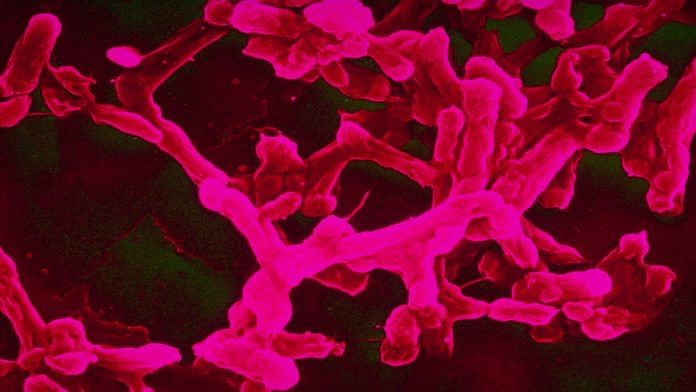New Delhi: Bacteria that cause typhoid fever are becoming more and more resistant to some of the most widely used antibiotics, according to a study published in The Lancet Microbe journal Wednesday.
Such strains, which exhibited some degree of drug resistance, have been increasingly prevalent in countries like India over the last 30 years, found the study by an international team of researchers, including those from Stanford University in the US.
Typhoid fever, which spreads through contaminated water or food, causes 11 million infections (110 lakh) and more than 1,00,000 deaths per year, with South Asia accounting for 70 per cent of the global disease burden. While antibiotics can be used to successfully treat typhoid fever infections, their effectiveness is threatened by the emergence of drug-resistant strains of the bacterium, Salmonella Typhi (S. Typhi).
The researchers performed whole-genome sequencing on 3,489 S. Typhi samples collected from typhoid patients in India, Bangladesh, Nepal, and Pakistan between 2014 and 2019. They also analysed sequencing data of 4,169 additional samples of S. Typhi isolated from more than 70 countries between 1905 and 2018.
Theiy found that drug-resistant strains — almost all of them originating in South Asia — have spread to other countries in nearly 200 cases since 1990.
“The speed at which highly-resistant strains of S. Typhi have emerged and spread in recent years is a real cause for concern, and highlights the need to urgently expand prevention measures, particularly in countries at greatest risk,” Jason Andrews, a researcher at Stanford University and lead author of the study, said in a statement.
“At the same time, the fact resistant strains of S. Typhi have spread internationally so many times also underscores the need to view typhoid control, and antibiotic resistance more generally, as a global rather than local problem,” he added.
Also Read: Where did ‘Black Death’ originate 7 centuries ago? Scientists say they’ve solved the mystery
Multidrug-resistant strains
Researchers identified as many as 7,658 samples with genetic variations that conferred drug resistance on the S. Typhi bacterium.
The strains were classified as multidrug-resistant (MDR) if they were found to contain genes that made them resistant to multiple antibiotics like ampicillin, chloramphenicol, and trimethoprim/ sulfamethoxazole.
Mutations that made bacteria resistant to azithromycin — a widely used antibiotic — were found at least seven times in the past 20 years, according to the study.
Moreover, the researchers were also able to identify genes in S. Typhi samples that make bacteria resistant to macrolides and quinolones, which are among the most critically important antimicrobials.
The research showed that drug-resistant S. Typhi strains have spread between countries in at least 197 cases since 1990.
While most of these strains were found within South and Southeast Asia, and East and Southern Africa, some have also been reported from the UK, the USA, and Canada.
Since 2000, multidrug-resistant strains of S. Typhi have declined steadily in Bangladesh and India.
However, these are now being replaced by strains resistant to other antibiotics.
For example, gene mutations that make strains resistant to quinolones — a large group of antibiotics that directly kill bacterial cells — have spread at least 94 times since 1990, with the origins of nearly 97 per cent of these strains traced to South Asia. Quinolone-resistant strains accounted for more than 85 per cent of S. Typhi samples found in Bangladesh by the early 2000s. By 2010, these strains accounted for over 95 per cent of the samples isolated in India, Pakistan, and Nepal.
(Edited by Amrtansh Arora)
Also Read: Mummified remains of 16th-century man could help crack history of E. coli evolution



